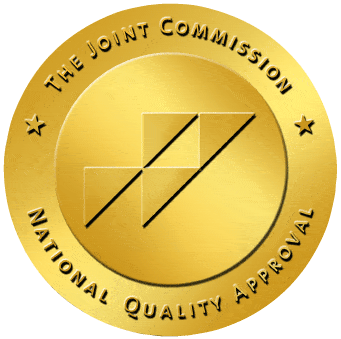Methadone and Addiction

Methadone and Addiction
What is Methadone?
Methadone is a prescription opioid medication used to treat moderate to severe pain. It is typically used as part of the treatment plan for addiction to heroin, narcotic painkillers or other opioids.
When used to treat pain, it is typically prescribed to people who have an injury, chronic illness or are recovering from surgery. This medication changes the way that the brain and nervous system respond to pain so that a person feels relief instead of pain.
It is taken as a tablet, powder, or liquid and must be prescribed by a doctor. When used for the treatment of a substance use disorder, it must be prescribed and monitored due to its strength and potential for addiction. Methadone is usually administered in a clinic daily until the prescription can be administered at home.
Someone might wonder, how does one opioid help treat addiction to another opioid?
History of Methadone
Methadone was first developed in Germany in 1937 as a replacement for the highly addictive pain killer, morphine. It was developed during World War II as morphine was in short supply, and German troops needed an alternative. Germans quickly discovered negative side effects at high doses and the use of the drug was stopped. Americans soon learned about methadone and discovered its ability to treat heroin withdrawal symptoms.
In 1947, the American pharmaceutical company, Eli-Lilly, manufactured a methadone medication called Dolophine.1 In the early 1960s, researcher Vincent Dole studied the effect of the drug on heroin users and noted its ability to help them stop using heroin. Dole then developed a formulation of methadone that was to be taken as a single daily dose for the treatment of heroin addiction.1
By 1971, 25,000 people addicted to opioids were taking part in Dole’s methadone maintenance treatment program (MMT).1 In 1972, the drug was approved for use in addiction treatment by the U.S. Food and Drug Administration, but controversy over its use led to strict controls.1 Today, approximately half a million people are in MMT programs.1
What are the Brand Names and Street Names for Methadone?
Brand Names:
Dolophine
Methadose
Biodone Forte
Methadone Syrup
Slang Names:
Amidone
Balloons
Breaze
Buzz Bomb
Chocolate Chip Cookies
Done
Dollies
Dolls
Fizzies
Jungle Juice
Junk
Mud
Red Rock
Tootsie Roll
Risk and Side Effects
Risks
Methadone might not be safe for everyone, and there are important risks that an individual should be aware of before using the medication. Before using this medication, tell the doctor if there are pre-existing conditions, such as:
Heart disease
Heart rhythm disorder
Electrolyte imbalance
Breathing problems
Lung disease
Head injury
Brain tumor
Seizures
Liver or kidney disease
Problems urinating
Gallbladder, pancreas, thyroid problems
Pregnancy/breastfeeding
Aside from any medical problems that might impact methadone use, several drugs affect the medication’s effects. You should always tell the doctor what medications and drugs you have taken or are taking. It’s also important to tell the doctor if you have taken/ingested any of the following:
- Alcohol
- Benzodiazepines
- Herbal products
- Illicit drugs
- St. John’s wort
- Tobacco
- Tryptophan
Side Effects
As with all drugs, there are potential side effects that might occur as a result of use. Methadone affects everyone differently. The effects will differ based on weight, health, dosage, if it is taken with other drugs, and if it is the first time using methadone or not. That being said, these are the common side effects:
Constipation
Dry mouth
Difficulty urinating
Difficulty falling or staying asleep
Flushing
Headache
Itchy skin
Mood changes
Restlessness
Sore tongue
Stomach pain
Sweating
Vision problems
Weight gain
These are some of the more severe effects of methadone use. If you experience any of these symptoms, call your doctor immediately, or seek emergency medical assistance. Symptoms include:
- Agitation
- Confusion
- Decreased sexual drive
- Diarrhea
- Difficulty breathing or swallowing
- Dizziness/weakness
- Erectile dysfunction
- Extreme drowsiness
- Fast heartbeat
- Fever
- Hallucination
- Hives
- Hoarseness
- Irregular menstruation
- Itching
- Loss of coordination
- Nausea
- Rash
- Seizures
- Severe muscle stiffness
- Shivering
- Swelling of eyes, face, mouth, etc.
- Sweating
- Vomiting
Apart from the risk of addiction, there are no long-term physical effects, and it is not likely to cause damage to any major organs. This is why it is believed to be a safe medication to use long-term.
Is it Safe to Take Methadone while Pregnant?
Women who are pregnant or breastfeeding can safely take methadone under the guidance of their physician. Taking methadone while pregnant will not cause birth defects. Methadone can help mothers who are struggling with substance use disorder to manage withdrawal symptoms without causing risk to the baby.
Withdrawal symptoms can actually increase the risk of a miscarriage or premature birth since withdrawal symptoms can cause the uterus to contract and can negatively impact health. Some babies might experience withdrawal after birth, but such effects are rare. A small amount of the drug passes into breast milk and does not typically cause harm to babies so using it while breastfeeding is also safe. MMT should be combined with prenatal care to reduce the risk of complications.
How Does Methadone Treat Opioid Use Disorder?
Methadone is often used for the treatment of opioid use disorder. This type of medication treatment is called methadone maintenance therapy, with the goal being to maintain sobriety. This type of treatment is usually only one factor of a persons’ overall treatment plan and is paired with therapy or counseling. The reason that the medication works for addiction treatment is that it blocks the feeling of high that occur from drugs such as heroin, oxycodone, morphine or codeine.
Methadone does not cause intoxication or sedation, and it also helps to prevent withdrawal symptoms that occur when someone stops using a drug such as heroin. Withdrawal symptoms can be extremely unpleasant and can make it hard to stop abusing substances. To combat that, methadone replaces the drug (e.g., heroin), allowing people to focus on other areas of treatment such as counseling and therapy, without struggling too much with withdrawal.
It is important to note, however, that methadone is not a cure for addiction; it merely acts as a way to stop abusing substances in order to focus on the treatment plan as a whole.
Methadone Maintenance Treatment
How Long Do You Take Methadone for When on Maintenance Treatment?
While everyone’s treatment plans differ, experts say that a person should typically be on MMT for at least a year. Many people will continue to be on a small dose of the medication for much longer. For people who are worried about the possibility of becoming addicted, a shorter treatment plan might be worth considering.
How Does MMT Work?
There is no universal guide for how MMT programs work. However, there are similarities in how methadone is used in addiction treatment. Individuals in the MMT program take doses of the drug once a day, typically mixed into an orange drink. Unlike other opioids, methadone is long-acting, meaning that a single dose can decrease withdrawal symptoms and cravings all day.
No Tolerance is Built Up While on Treatment
Additionally, tolerance, one of the symptoms of addiction, develops much more slowly with methadone than with other opioids, such as heroin. In other words, people who use heroin will quickly find themselves needing to take bigger doses to feel the same effects. The same is not quite true of methadone as a regulated dose can remain effective for a longer time. While it can be taken for longer periods and is considered to be medically safe, this does not mean that it is not addictive. Methadone is labeled as a Schedule II drug by the U.S. Food and Drug Administration, meaning that while it does have a legal and medical use, there is also a higher likelihood of addiction.
At first, patients must come to the clinic every day to receive the medication until they have become stabilized, at which point they might be granted take-home doses. The reason that patients have to receive the medication at the clinic is so that they can be supervised to ensure overdose doesn’t occur. This is also to ensure the medication is being taken as prescribed and not being abused or given to other people.
How Effective is MMT?
Because MMT is not a cure for addiction, it is hard to measure how effective it is. While it might help in the course of treatment, it is not a cure itself to the underlying causes of addiction. While numbers vary, MMT has a success rate of between 60% and 90%.2 Success is more likely the longer that somebody is engages with treatment. MMT is also more likely to be successful if it is combined with other treatment approaches such as counseling, therapy, and a strong support network. It is important to discuss the best treatment plan with a doctor.
Advantages of MMT
It helps reduce withdrawal symptoms
It helps to overcome drug cravings
A person is unlikely to overdose on methadone alone compared to other opioids
MMT allows someone to remain stable while focusing on other elements of treatment
Replacing illicit drug use with methadone decreases the number of health problems associated with IV drug use (e.g., HIV, hepatitis B, hepatitis C, skin infections)
Only one dose is needed per day since the effects are long-lasting
It is cheaper than substances such as heroin
It is a legally prescribed medication
Disadvantages of MMT
There might be negative side effects associated with the treatment
Treatment can be an inconvenience since people receiving the medication have to come to the clinic every day to receive their dose or to pick up their take-home dose
Individuals receiving the medication might face the stigma of being a 'drug addict'
It can be addictive and can lead to abuse
Methadone Abuse and Addiction
Although it is widely known that methadone can be extremely addictive, it is also considered to be necessary for the recovery of substance use disorders. This has caused controversy within the medical community as the medication has many uses and benefits but has also been criticized as simply replacing one addiction with another.
Methadone use disorder occurs just like it does with other substances. As more and more is needed to feel the same effects, tolerance is built-up towards the substance and cravings occur when the substance isn’t used. Methadone taken as prescribed is considered to be safe but it can be abused when injected or snorted. The possibility of addiction is something to consider when creating a treatment plan.
Statistics of Methadone Abuse
In 2008, 750,000 people were prescribed methadone. Initiatives to decrease the use of the medication saw prescriptions fall 26% from 2013 to 2016.3 Despite the low percentage, it was responsible for 23.9% of all opioid-related deaths.4
Between 1999 and 2006, the number of methadone-related deaths increased from 784 to 5406.4 In 2007, 5,518 people died from methadone related causes. Fortunately, this number decreased to 3,400 in 2014.4
Methadone Overdose
Because methadone is quite a strong opioid, there is a chance that a person could overdose if taking too much. This typically occurs when methadone is being taken without a prescription or at a higher dose than prescribed. This is why it is important only to use the medication with a prescription and as directed by your physician. The symptoms of an overdose are:
- Coma
- Constricted pupils
- Discoloration in nails/fingertips
- Dizziness
- Hypertension
- Intense red rash/itching/hives
- Loss of consciousness
- Nausea
- Problems breathing
- Severe constipation/inability to urinate
- Vomiting
Methadone Withdrawal
Although methadone is used to treat opioid use disorder, it is an opioid itself and can also pose a risk of a substance use disorder. Studies have shown that many people with substance use disorders find methadone to be more addictive than other illicit substances. Despite this, methadone is still regarded as the safest method of treatment when lessening withdrawal symptoms.
Using the medication for an extended period and then stopping use can also result in withdrawal symptoms. Symptoms of withdrawal typically appear 24-26 hours after the last dose. The detox process occurs under the supervision of a physician since MMT is a medical treatment. The detox process can take anywhere from 2-3 weeks to 6 months.
The First 30 Hours
Within the first 30 hours of stopping methadone, some symptoms that an individual might experience are:
Anxiety
Restlessness
Runny nose
Sweating
Tiredness
Trouble sleeping
Watery eyes
Yawning
After Three Days
While at first withdrawal symptoms feel like the flu, severe symptoms might persist longer than flu symptoms. After about three days of detoxing, one might experience more severe symptoms, such as:
Cramps
Diarrhea
Depression
Drug cravings
Goosebumps
Muscle aches and pains
Severe nausea
Vomiting
Withdrawal symptoms tend to be the worst during the first week after stopping any substance. Symptoms of withdrawal can last longer than a week; however, some may continue for longer including anxiety, depression, a lack of energy, and sleep problems. During this time, a person might be more likely to start using other substances since the withdrawal can be difficult. Many people continue to stay on a very low dose of methadone to avoid this. The process of tapering off is one that should be discussed with one’s doctor. Various options can be tailored to each individual.
How to Stop Using Methadone
Most people do not intend to use methadone for the rest of their lives, and indeed, using it long-term can increase the chance of a substance use disorder. At the same time, many people in the medical community believe that long-term use is the best way to avoid relapse and overdose. Many people also want to stop using the medication as it can be inconvenient to travel to the clinic every day.
If part of the treatment plan includes counseling, therapy, or support groups, progress in those areas of treatment will help determine the readiness to stop use. If you and your doctor have decided that you are ready to try to come off of methadone, it is important to do so very gradually, with medication supervision.
Cold Turkey vs. Tapering
Quitting methadone cold turkey can lead to severe withdrawal symptoms. The best way to taper off methadone use is very slowly. One method involves using another drug such as suboxone, to help manage withdrawal symptoms. This process is criticized, however, for just replacing one drug with the next one and so forth.
Another method is to lower the dose very slowly over a long time so that the body has time to get used to and adjust to lower doses without severe withdrawal symptoms. If use of the drug stops suddenly, negative withdrawal symptoms will likely appear. This increases the likelihood of returning to the original drug (e.g., heroin) to combat those symptoms. Always discuss ending medication use with a doctor before stopping the use of methadone.
Misconceptions
Methadone is Not Addictive
Because it is used in addiction treatment, many people falsely believe that it is not addictive. This is untrue, however, and methadone carries a high risk of abuse and can be as difficult to stop using, similar to other illicit opioids.
Methadone is a Cure for Opioid Use Disorder
Although methadone helps with the withdrawal symptoms from stopping the use of a substance such as heroin, but it does not tackle the cause of addiction. Therapy, counseling, and support groups will help to target those underlying issues while methadone allows patients to remain stable and avoid negative withdrawal symptoms.
Methadone Will Make a Person High
At a prescribed dose and when taken correctly, this drug will not make a person feel high. In fact, it is designed to block the feelings of other drugs such as heroin.
Methadone Will Make a Person Sick
Methadone itself is not likely to make an individual sick long-term. At the beginning of treatment, it’s possible to feel sick because the body has not yet received enough of the medication to combat the withdrawal symptoms fully.
Long-Term Methadone Use Will Damage Your Organs
Methadone is safe to use and will not cause damage to major organs.
It Is Easy to Stop Using Methadone
Even though it is a legally prescribed medication, it can be very addictive and difficult to stop using.
People Who Use Methadone Have Substance Use Disorders
Even though it can be addicting, methadone is a medication used for the treatment of addiction, and is no different than taking insulin for diabetes.














